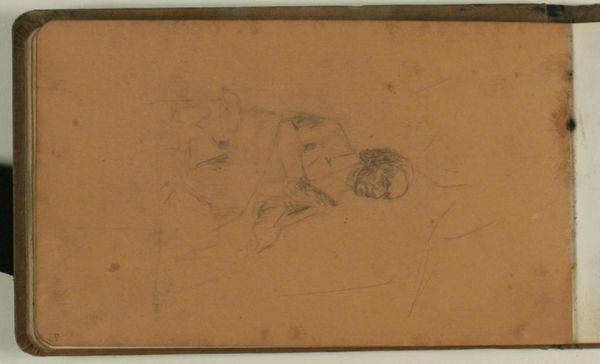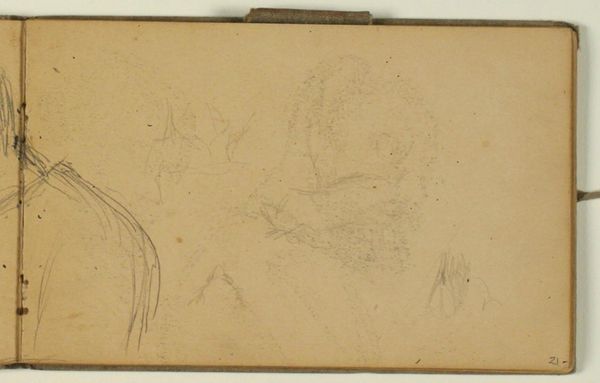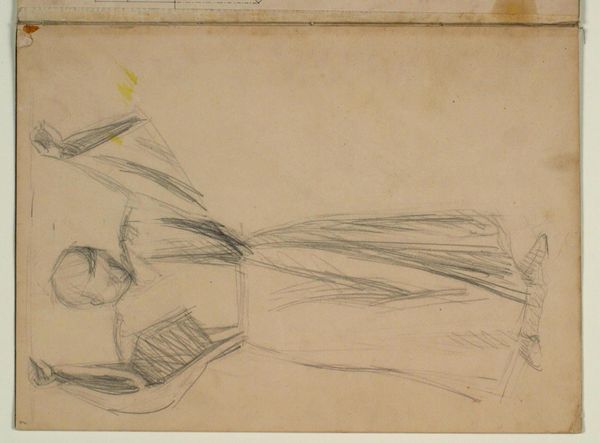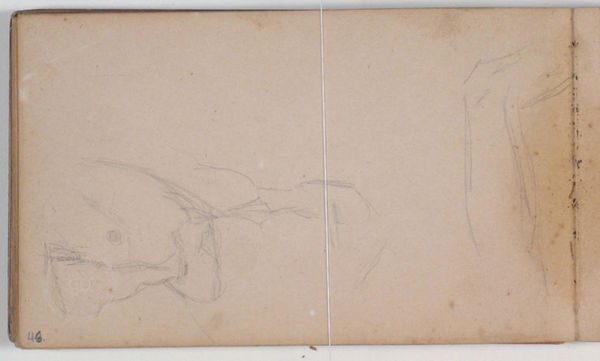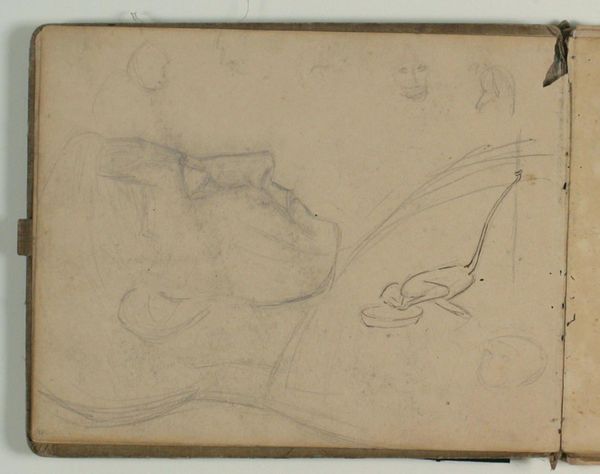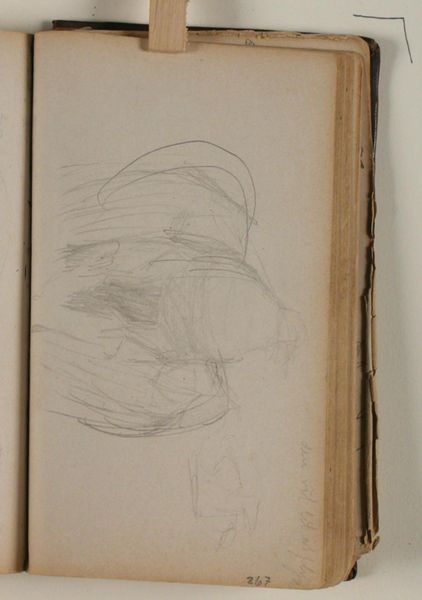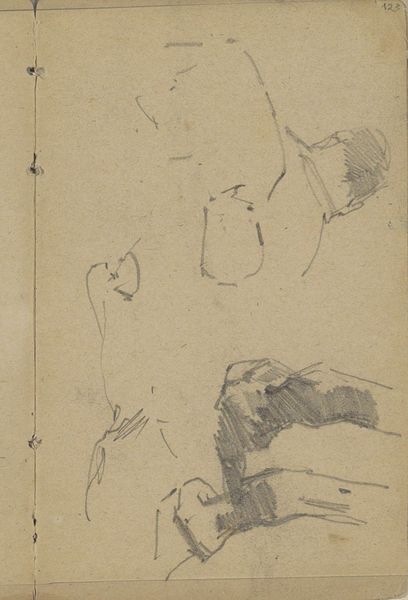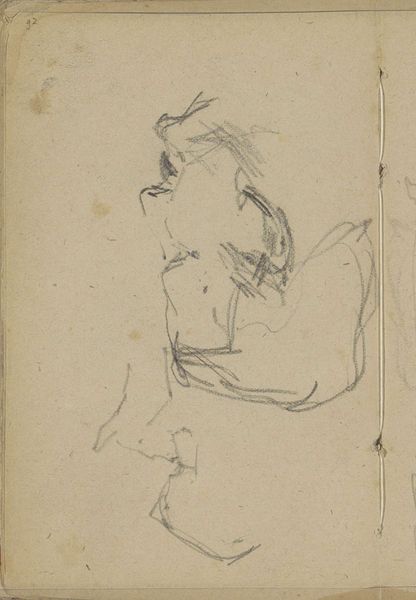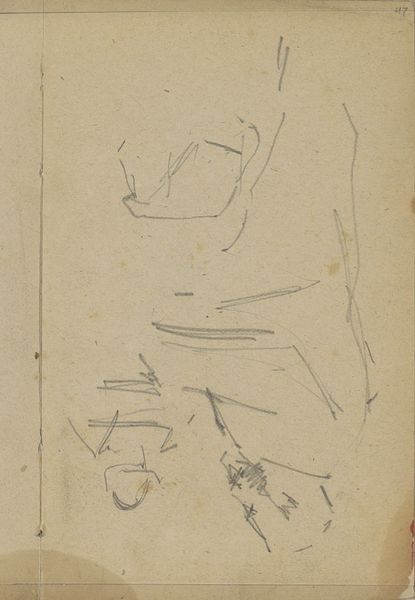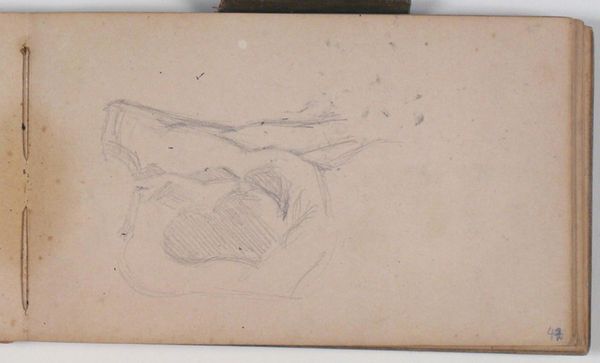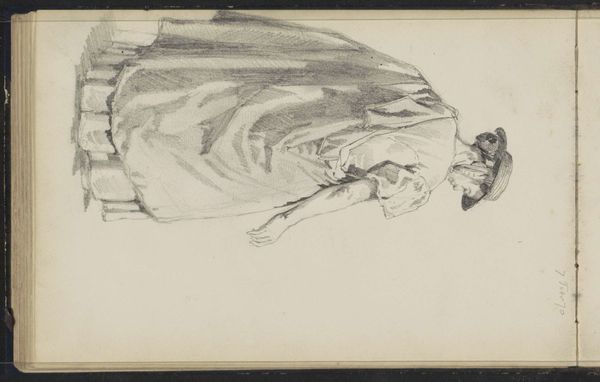
drawing, pencil
#
portrait
#
drawing
#
figuration
#
coloured pencil
#
pencil
#
realism
Dimensions: 113 mm (height) x 182 mm (width) (bladmaal)
Curator: Looking at "Studie af strikkende kone", a pencil drawing done in 1881 by Niels Larsen Stevns, currently held at the SMK – Statens Museum for Kunst. It's a simple, small study. What do you see when you first look at it? Editor: There's something wonderfully intimate about it. The lines are so soft and the whole composition is like a whisper. She seems utterly absorbed in her knitting, lost in her own world, maybe dreaming a little while her hands are moving. Curator: It’s interesting that you say “intimate,” because Stevns was clearly working from life, sketching quickly, observing. The image itself provides insight into how artists engaged with representing everyday life during that time. Domestic labor was becoming more visible in art, though not always depicted sympathetically. Editor: It makes me wonder about her story. Was she a family member, a hired hand, or just a fleeting glimpse of a life? Those rough strokes feel less like documentation, and more like Stevns empathizing, feeling her reality through observation, as an artist. It reminds us that everyone's got their own dreams. It looks as if I might know the feeling of dreaming when you have so much manual activity. Curator: That sense of empathy connects with the broader context. Think about the rise of realism and naturalism in the late 19th century. Artists sought to depict subjects from all classes and from all societal ranks as they are, without idealization, and often highlighting their social and economic realities. Here the knitting, a symbol of domestic necessity, makes the study much bigger, a commentary on the everyday lives of women. Editor: True! We can see through this tiny window back in time. Her clothing seems modest. The way Stevns’s marks capture her bent posture; they depict fatigue but not tragedy, endurance. I almost imagine that the texture on her sleeves holds some stories in them! Curator: Exactly, and her hands are almost the focal point, drawing us to the reality and the action. This isn't just about seeing her knitting, but really showing what life and economy would be like for many working women in 1881. Editor: What stays with me is the contrast, really. This isn't a grand portrait destined for some aristocratic collection, it's something so momentary and grounded in her presence that lets us stop for a minute. So now every time that I do knit, I wonder about the other million other people across time and space, how many lives share a little act, again, and again, across different times. Curator: It really becomes a way of relating to not just her, but also with each other. This drawing manages to capture something essential about the experience of work, memory and quiet contemplation.
Comments
No comments
Be the first to comment and join the conversation on the ultimate creative platform.
